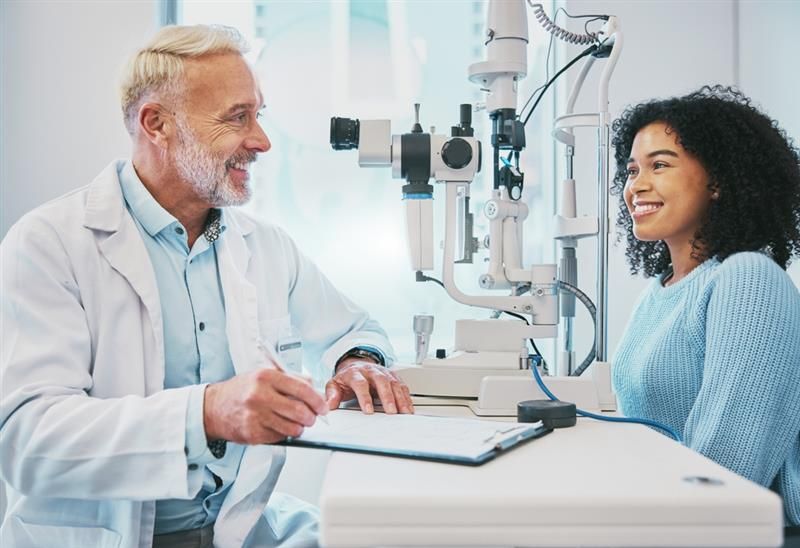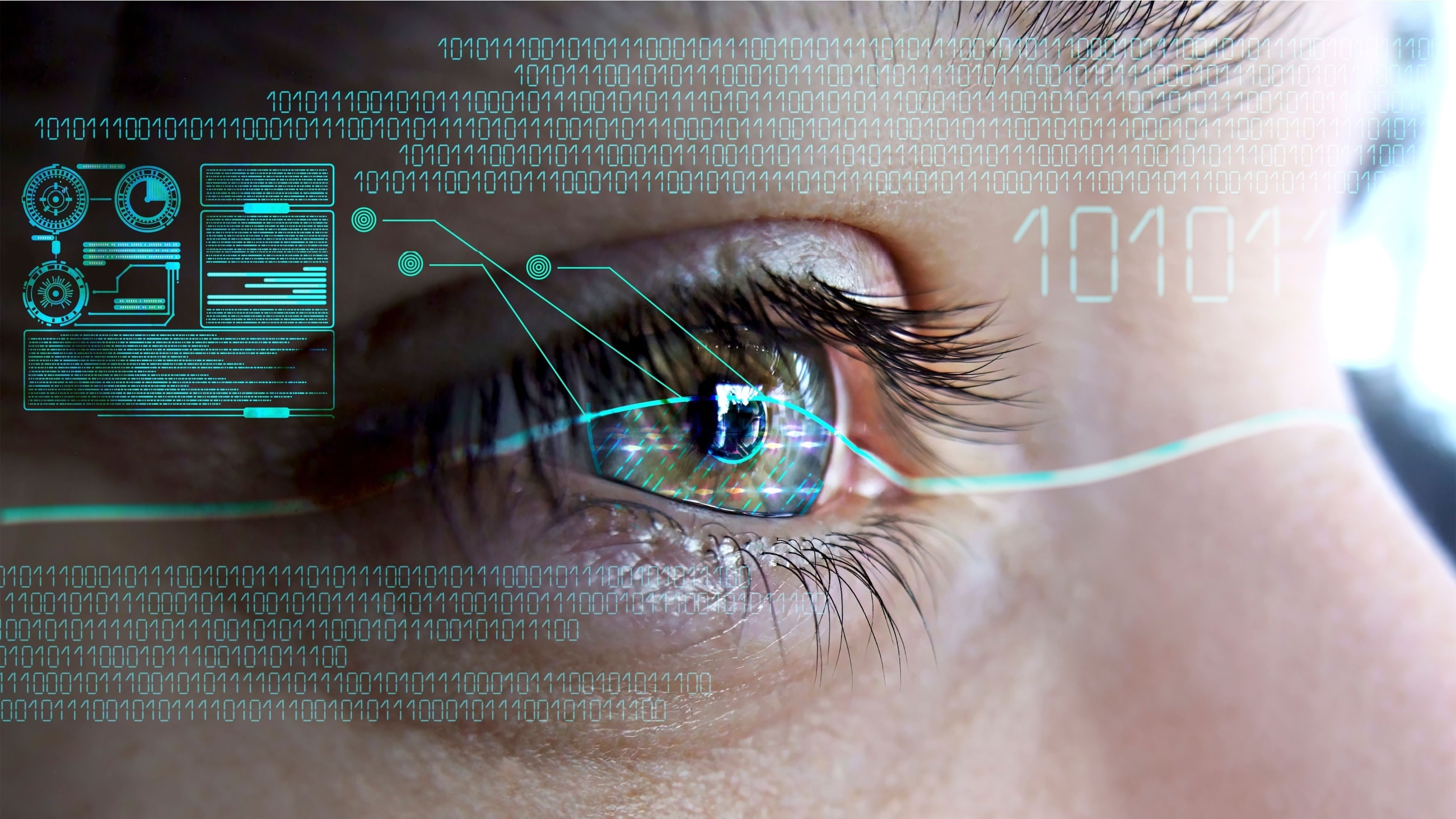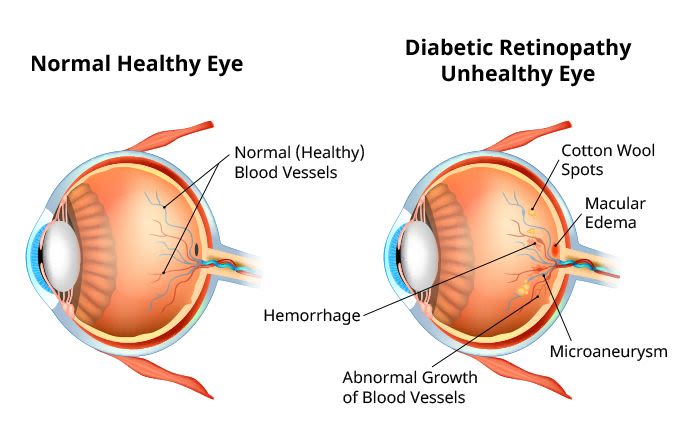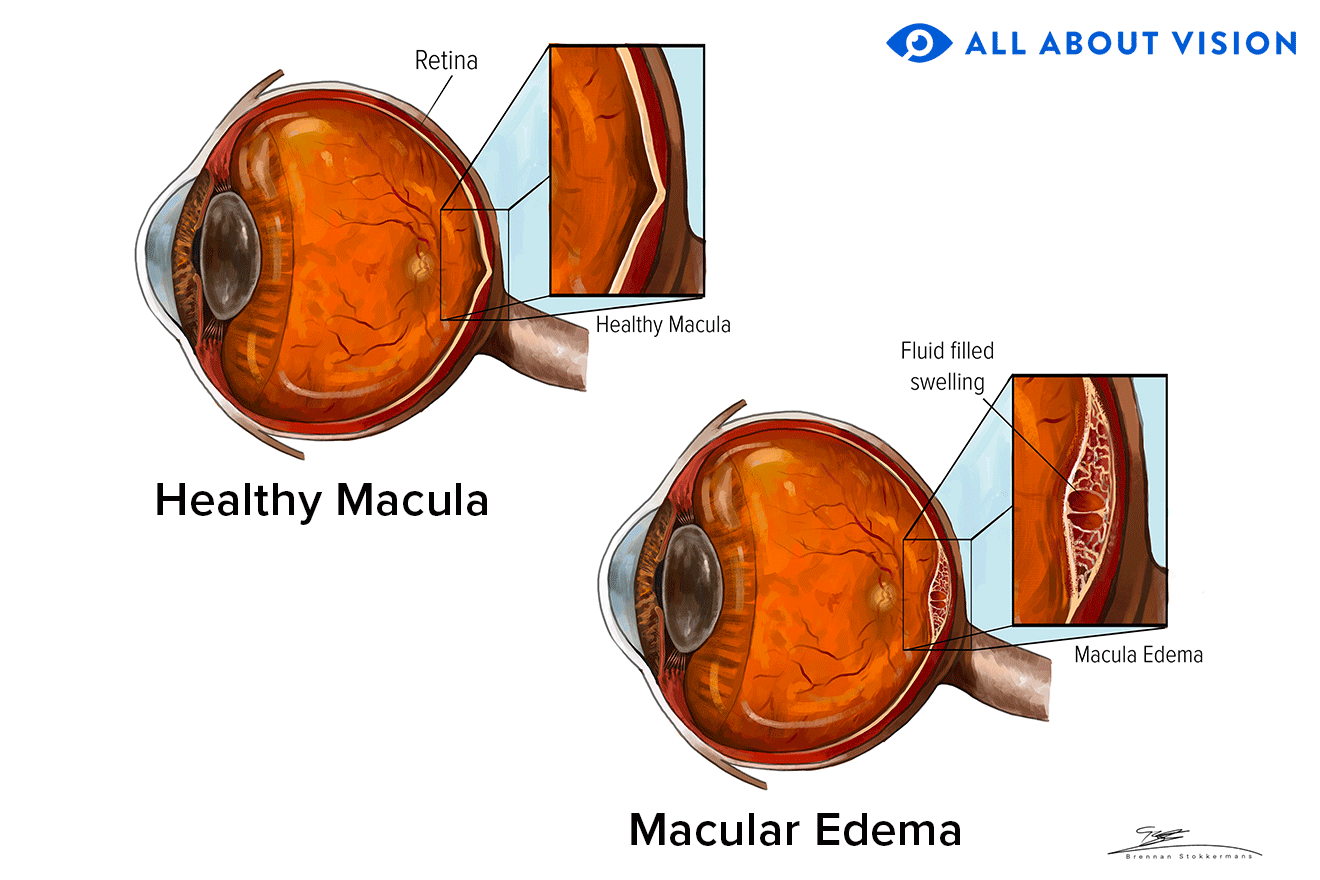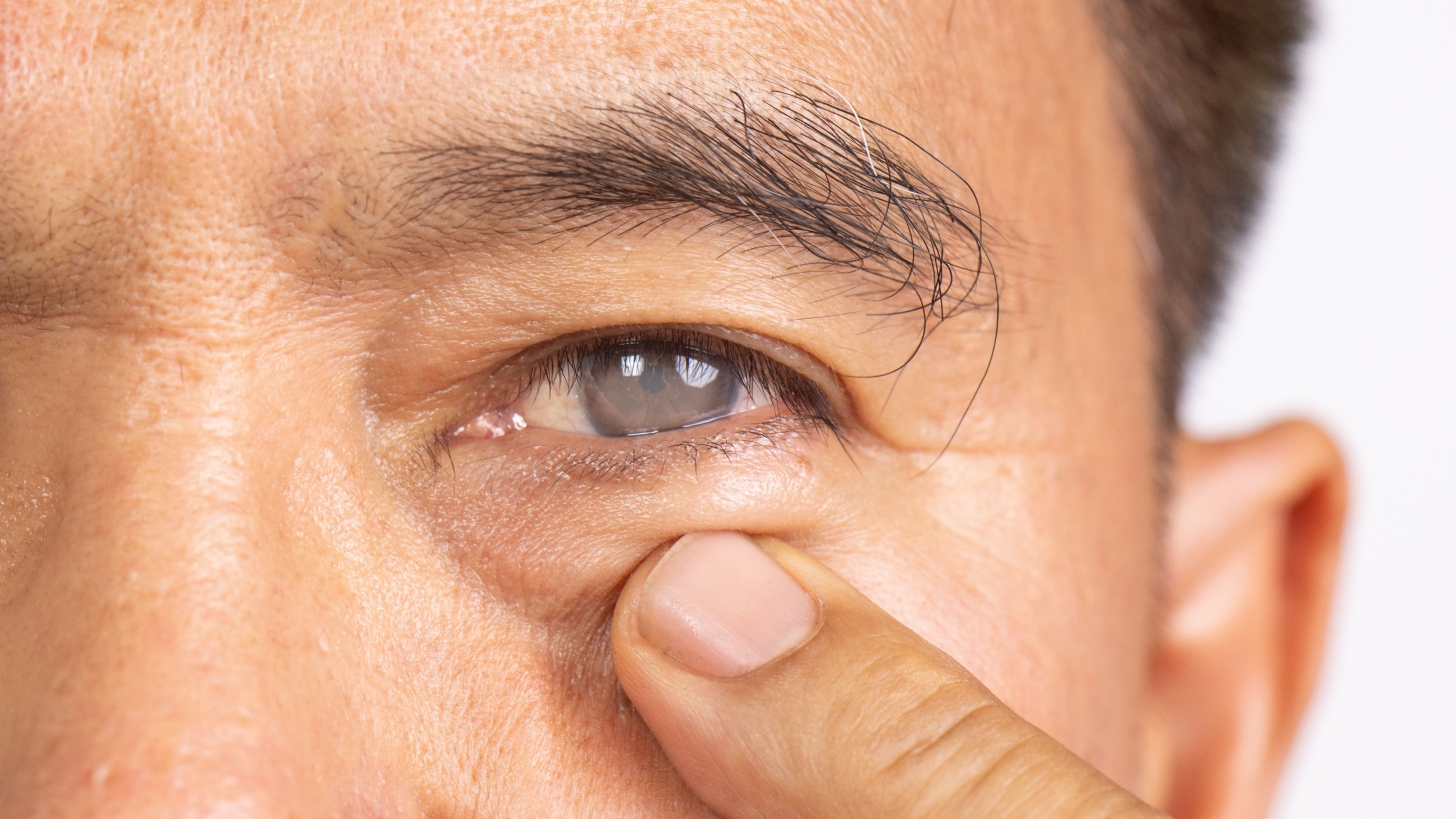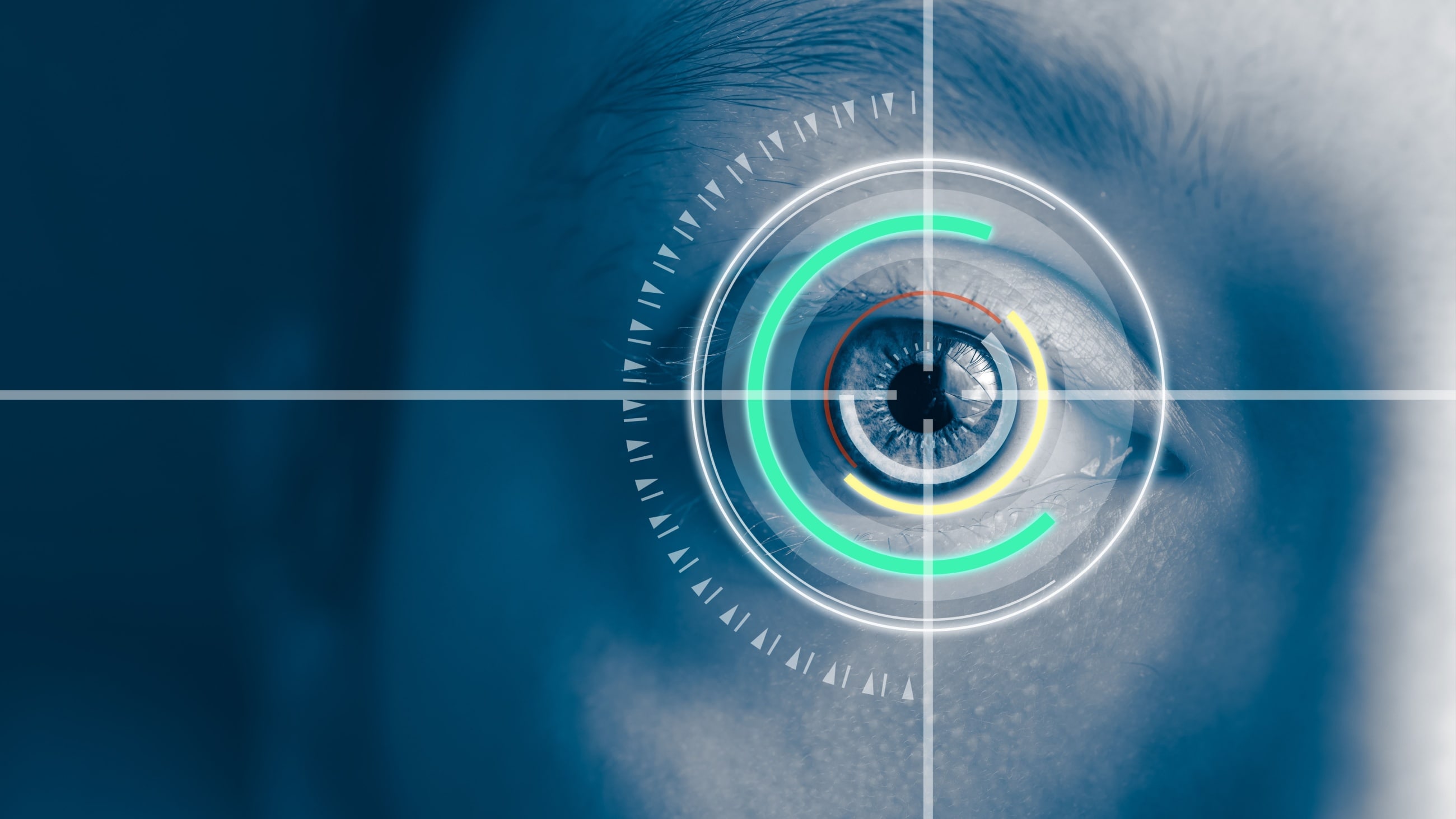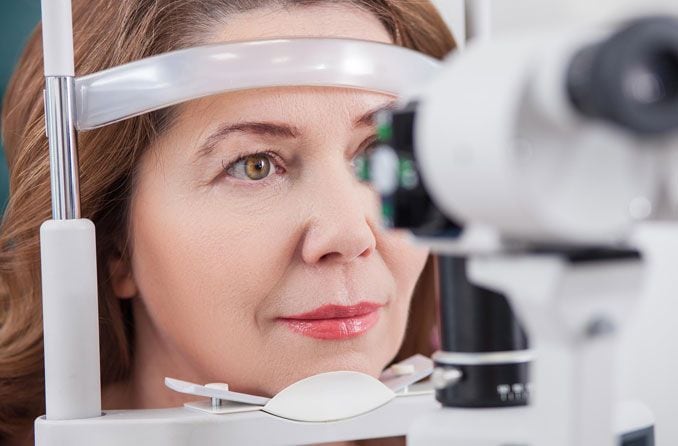Artificial intelligence and your eyes: A new era in healthy vision
In one way or another, artificial intelligence (AI) is becoming a bigger part of everyday life. It may be polarizing at times, but it's hard to deny the impact AI has on people and businesses around the world.
AI innovations in health care could soon become some of the most important. In eye care, groundbreaking AI tools could one day help preserve — or even save — your vision.
How does AI work?
AI models are often trained to answer questions and solve problems by studying large amounts of data. The models use formulas called algorithms to look for patterns and connections in the data so they can generate the most accurate results.
In eye care, AI applications could help improve patient care by making numerous processes faster and more efficient. AI could become a regular part of:
- Diagnosing and monitoring eye diseases
- Predicting how an eye condition may change over time
- Fine-tuning treatment plans
- Assisting before, during and after certain eye surgeries
- Developing new treatments
AI won't replace your eye doctor anytime soon. But the technology could help your doctor optimize their skills and practice. Before long, AI may even become a part of your routine eye exams.
Current and future AI tools in eye care
In all corners of optometry and ophthalmology, AI tools are in various stages of research, development, approval and implementation. These tools may eventually be used to help people with a number of eye conditions, including:
Diabetic retinopathy
So far, all the FDA-approved AI tools related to eye health are used to screen for diabetic retinopathy (DR).
DR is the medical term for retinal blood vessel damage caused by diabetes. The retina is the light-sensitive layer of cells at the back of the eye. It's essential to your eyesight.
Diabetic retinopathy can lead to vision loss if it isn't properly diagnosed and managed. The sooner DR is detected, the better. This allows for early monitoring, which can help determine the best course of treatment.
As of this writing, only these three AI devices have approval from the U.S. Food and Drug Administration (FDA):
- LumineticsCore (formerly IDx-DR)
- EyeArt
- AEYE-DS (compatible with either a tabletop or handheld camera)
These AI devices use retinal imaging (pictures of the retina) to check for signs of blood vessel damage, such as:
- Macular edema – Swelling in the central retina (the macula)
- Microaneurysms – Small blood vessel bursts
AI screening tools give eye doctors a quick and effective way to diagnose and monitor diabetic retinopathy. This can save patients a trip to a retina specialist and help lower the specialist's workload at the same time.
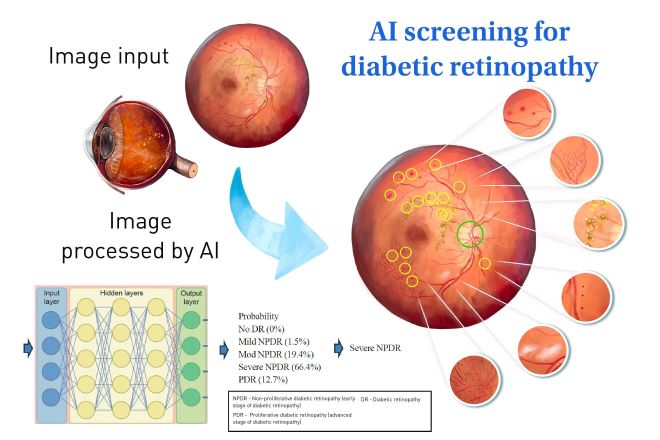
While these AI systems can be helpful, they don't replace eye doctors. Like other AI devices that could be approved in the future, they're valuable tools in the overall management of diabetic retinopathy.
Companies like Optos (makers of the optomap exam) are also using AI to help diagnose diabetic retinopathy. While Optos' AI tech hasn't been approved yet by the FDA, the European Union and United Kingdom have granted it a CE marking. This is somewhat similar to FDA approval in the United States.
Age-related macular degeneration
Age-related macular degeneration (AMD) is damage to the macula (a small spot on the central retina) that happens over time. The macula is responsible for the center of your view, so AMD can affect your central line of vision.
AI systems are being developed to help eye doctors detect signs of AMD and diagnose it earlier. AI may also be used to determine who has a higher risk of progressing to late AMD. This is the final stage of the disease that causes the most damage to your eyesight.
So far, AI algorithms have been used to detect and monitor AMD through:
- Optical coherence tomography (OCT) – Cross-section retina images used to check for drusen (small yellow deposits) and other changes that could indicate or relate to AMD
- Fundus photos – Images of the inner eye that can be used to monitor the retina for changes
These are common tests for people who have or may have AMD and several other eye conditions. Adding AI to the process makes it possible to analyze images more quickly for earlier detection and treatment.
Other retinal conditions
While they aren't approved for public use yet, some AI algorithms and devices have also shown promise in detecting the following retina problems:
- Retinopathy of prematurity (ROP) – Harmful blood vessels that can grow in a baby's retinas when they're born too early or are very underweight at birth
- Myopic maculopathy – A form of macular degeneration caused by pathologic myopia (a type of nearsightedness that damages parts of the eye)
- Retinal vein occlusion (RVO) – When a vein in the retina becomes blocked
- Hypertensive retinopathy – Damage to the blood vessels in the retina caused by high blood pressure
- Papilledema – Swelling of the optic disc, the area where the retina meets the optic nerve (the light-signal pathway from the eyes to the brain)
- Retinitis pigmentosa (RP) – A rare condition that slowly weakens cells in the retina over time
Cataracts and cataract surgery
A cataract is clouding of a clear object in your eye called the lens. Light has to pass through the lens before you can see it, so cloudiness can cause blurry vision and eventually vision loss.
Fortunately, cataracts can be treated with cataract surgery, when the surgeon replaces your cloudy lens with a new, artificial lens. This transparent replacement lens is called an intraocular lens (IOL). The IOL can give you clear vision again.
AI is being researched to see how it can help diagnose cataracts and calculate the vision-correcting power of IOLs. Researchers are also trying to use AI to make cataract surgery even safer and more effective.
AI studies and early AI devices are already being used to:
- Help train ophthalmologists for cataract surgery
- Help surgeons make the best possible decisions to lower risks during surgery
- Give surgeons feedback after surgery to improve their techniques
Cataract surgery is the most common medical procedure in the world. Because of this, even small improvements could help countless people get sharper eyesight with the lowest risk possible.
Glaucoma
Glaucoma is a group of eye diseases that damage the optic nerve. It's often associated with high pressure in the eye, and it can lead to peripheral (side) vision loss and eventually blindness if it isn't treated.
Researchers are looking into ways to use AI for patients who have or could have glaucoma. Based on current research, AI could soon help eye doctors diagnose and monitor glaucoma by analyzing:
- Eye pressure data
- Visual field test results
- Different types of OCT images
- Photos of the optic disc
Cornea conditions
Several conditions can affect your cornea, the clear, dome-shaped layer at the front of your eye.
AI tools are being developed that use eye tests, scans and even smartphone photos to diagnose corneal conditions.
Corneal topography is a set of color-coded maps of the cornea’s “terrain,” so to speak. Doctors check these maps for unusual corneal features caused by eye problems. They use the maps to diagnose and manage these underlying conditions.
One of these diseases is keratoconus, which slowly makes the cornea thinner and shaped like a cone. It often needs treatment to prevent your vision from getting worse.
Examining corneal topography maps from 200 different eyes, one AI model was 99.3% successful at identifying bulging and thinning of the cornea. This condition, called corneal ectasia, can result from keratoconus, corneal injury or infection, or surgery to the cornea.
AI is also being studied in relation to other cornea-related problems, including:
- Dry eye disease – When the eyes don't make enough tears or dry out too fast, the cornea may become irritated
- Pterygium (surfer's eye) – A growth of tissue covering part of the sclera (the white part of the eye) that can eventually grow over the cornea
- Infectious keratitis – A cornea infection from bacteria, viruses, fungi or parasites
Corneal topography is also being used to plan for cornea procedures like LASIK.
ChatGPT and other AI chatbots
Overall, AI chatbots can be a helpful resource in a patient's eye care. But they can make mistakes, so their medical guidance and information should never replace an eye doctor's advice.
These bots are called large language models (LLMs) because they're trained on huge amounts of text to understand and respond using the same natural language you use every day.
You've probably heard of one or more of these popular LLM-based chatbots:
- ChatGPT (OpenAI)
- Gemini (Google)
- Claude (Anthropic)
- Llama (Meta)
Some early, limited research has tested the possibility of using AI chatbots for eye health.
An October 2023 study involved asking ChatGPT common questions about childhood myopia and amblyopia ("lazy eye") and then asking the same questions to two pediatric ophthalmologists.
The chatbot's responses were "acceptable" about 85% of the time, while the doctors agreed that 96% of their own answers were accurate.
Some data also shows that AI models are improving as they're updated.
For example, researchers in an August 2023 study gave ChatGPT descriptions of patients with cornea issues. GPT-3.5 made the correct diagnosis 60% of the time, but the newer GPT-4 improved to an 85% success rate.
However, human cornea specialists were correct 90% to 100% of the time across all cases.
While the doctors were more accurate, the LLM's possible improvement and future advances could still make it a helpful tool under professional supervision.
Other eye-related AI advancements
Many diseases elsewhere in your body can cause changes in your eyes. This is one of the many reasons why annual eye exams are so important.
AI-related research is examining the body-eye connection more closely.
Some of this research involves the connection between eye changes and Alzheimer's disease and dementia.
The NeurEYE research team in Scotland is using AI to study millions of anonymous eye scans. The AI will learn to spot changes in the retina that could be early signs of dementia, including Alzheimer's disease. This could help a doctor determine a patient's risk much earlier.
While AI eye devices have already been approved to help diagnose diabetic retinopathy, they may also be used to find other complications of diabetes.
One common complication is nerve damage called peripheral neuropathy. It can cause symptoms like numbness, burning and weakness in your limbs, most often the feet.
Researchers are working on a way for AI to examine images of small fiber nerves in the cornea for signs that could suggest diabetic peripheral neuropathy. So far, the cornea test seems to be about as accurate as an invasive skin biopsy.
If it's approved, patients may be able to get tested for neuropathy at the same time as their retinopathy screening. This could help their care team get a better idea of how diabetes is affecting two important parts of their body.
These are only two of the things your eyes can reveal about your health. AI-related eye research will continue to expand into new areas (if the work isn't already underway).
Challenges and limitations
AI isn't perfect. Eye doctors and researchers have to keep limitations like these in mind:
Mistakes
AI makes mistakes from time to time. This might not be a big deal for casual AI use, but an eye care error can have serious consequences.
In a September 2023 study, researchers asked ChatGPT typical patient questions about drusen. These small yellow spots on the retina can be signs of macular degeneration, which can damage your vision.
The study found that 5% of the answers were inaccurate in ways that could potentially harm a patient's vision.
These issues may improve over time, but there may always be some risk of errors.
This is why AI is seen as one tool in an eye doctor's toolbox. Its feedback can be helpful, but the doctor still relies on their training, experience and human logic to decide how to use it.
Bias
An AI model is only as good as the information it's trained on. When the information is limited or unequal it can lead to bias in much the same way it can in people.
For example, nearly half the world's population isn't represented in the retinal images used to train AI. This can be due to reasons like:
- They don't have access to an eye doctor. This may mean there are too few eye doctors where they live or that they can't afford the cost.
- They don't have access to retinal imaging devices or similar eye tests.
- They're uninsured or underinsured.
- Language barriers or cultural factors.
- Other social and systemic issues.
Because retinal eye problems affect people in underserved areas just as much as anyone else, having less data could lead to less accurate AI diagnoses. This could make health differences even worse.
It's another reason why eye doctors and researchers need to double-check AI's work.
Data privacy
Patient information related to someone's AI eye care should be kept safe and private.
When FDA-approved AI is used in a doctor's office, images and other patient information are likely protected by the HIPAA Privacy Rule. But the same may not always be true if a patient's care involves common chatbots or other AI applications.
This may change over time as the chatbots, devices and other AI technology evolve to help patients with their eye and vision concerns.
Checking for other eye problems
In some cases, an AI device can be great at diagnosing a specific eye disease but miss other potentially serious problems.
For example, while an AI device approved to detect diabetic retinopathy from retinal images may perform its job very well, it might not recognize signs of AMD, glaucoma or other sight-threatening diseases in the area. This is because the AI algorithm was only trained to detect diabetic retinopathy.
This highlights why oversight from an eye doctor is so important.
The future of AI in eye care
AI devices could soon be used in eye exams, prescription determination, disease diagnosis, patient treatment, and other areas of eye and vision care.
More health and regulatory agencies worldwide continue to approve AI tools for use in eye care. There may only be a few FDA-approved devices in the U.S. right now, but more are almost certainly on the way.
For now, it's still important to schedule regular eye exams — even if your vision seems fine. The exams help protect your eye health and sight while AI eye technology continues to evolve.
